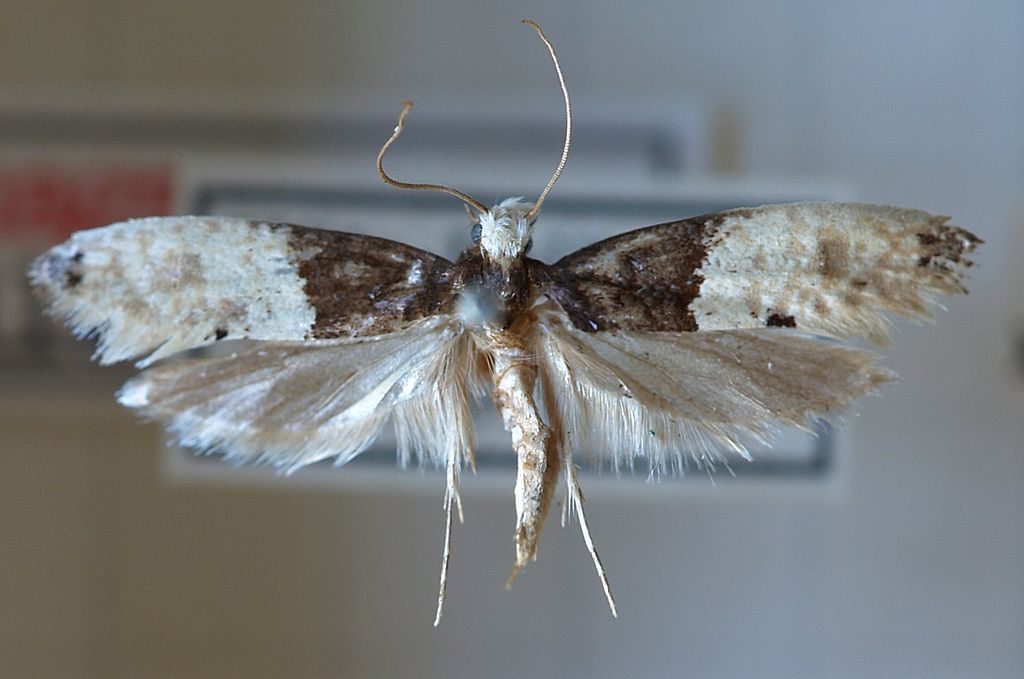A carpet moth infestation really isn’t nice and it can be costly too. We had a customer call at Avonvale Carpets last week looking for some advice on what to do about it, and a replacement carpet… Carpet moths had munched their way around the edges of her lovely, relatively new, wool carpet and it had all been a bit of a surprise.
For Director Paul such conversations about carpet moths have sadly though become all too common. “I’d say that 35 years ago I’d come across carpet moths maybe only a couple of times a year,” he says, “I can even remember the road in Trowbridge and the house where I saw carpet moths for the first time.”
“These days, we seem to be having such conversations on a weekly or even daily basis sometimes. My perception is that carpet moths have become quite a big problem, in the South West at least. And it’s not down to either our slightly warmer climate or older housing stock either. I think it’s more due to changes in cleaning habits, central heating and better insulation.”
But where do carpet moths come from?
The natural habitat of carpet moths is actually outdoors, and birds nests in particular, where they feed on keratin in bird feathers, or in discarded animal fur or skin.
They can get in the house as tiny eggs, picked up on shoes or by pet dogs and cats. Second hand furniture or rugs, particularly antiques, can also inadvertently bring them in.
Outdoors, carpet moths manage a couple of life cycles a year and are dormant in winter. In our nicely heated homes however they can be active all year round and manage as many as six or seven life cycles in the same time.
What do carpet moths look like?
Carpet moths can lay up to 200-300 eggs at a time and they’re so small you’d hardly notice them. The active larvae though are a little more obvious. They’re a tiny grub wrapped in a silken case which they drag themselves around in while they chomp their way through your carpet.
And be aware that heavily dyed carpet fabric does not put them off. Indeed it can simply render them a very similar colour, which just makes them even harder to see. The larvae, by the way, can live up to two years, which is a lot of eating!
Once they’ve eaten enough they seal their woven case to make a cocoon which looks like a grain of rice. They pupate and become adult moths which are only 5mm long, grey or buff coloured, with a wingspan of around 15mm, although they barely fly at all, they hop, again making them harder to spot.
What do carpet moths like?
So they mainly feed on the keratin that’s found in natural carpet fibres like wool. So it doesn’t matter whether your carpet’s 100% wool or a 50/50 blend of manmade fibres, they’ll eat they’re way through it given the chance. They’re also attracted by dust, food traces and moisture caused by spillages.
They like hot and humid environments where they can’t be disturbed and so they’ll thrive in quiet, dark corners, in nooks and crannies, along skirting boards, under heavy furniture that’s rarely moved, behind heavy curtains and next to radiators and hot pipes.
What can be done to combat carpet moths?
So there’s lots of combinations of powders, sprays, papers and fumigation devices you can buy and of course you can bring in expert pest controllers to tackle the problem for you by fumigating the house. The chemicals used though are not particularly environmentally friendly. And there are no guarantees that the moths won’t return.
Now I know none of us like too much housework, but by far the best way to keep carpet moths at bay over the long term is through regular vacuuming, as Paul explains, “The carpet moth problem has become worse I believe because central heating and double glazing helps create perfect conditions for breeding. And at the same time, though it hurts me to admit it, we just don’t clean as much as previous generations.”
“In days gone by, Mum or Gran would regularly move all the furniture and beds to one side to thoroughly hoover behind and underneath, not a patch of carpet would be missed. Rugs and curtains would be taken from the house and beaten. All this would disturb and remove eggs and larvae from the house. The problem was controlled or at least contained as a result.”
“These days, generally speaking, we aren’t quite as thorough. And vacuum cleaners aren’t perhaps as ‘aggressive’ and heavy as they once were and they’re becoming even lighter in weight, and handheld too. So while none of us want more housework, we really need to think more about how we’re looking after our carpets.”
“Are we hoovering underneath furniture? Are we hoovering often enough? Are we using the nozzle to get into all those quiet corners?” …
We’re often asked of course whether there are any ‘mothproof carpets’, and the answer is yes. There are certainly a number of wool carpets that have moth resistant treatments applied during manufacture and which offer a limited guarantee, with lots of conditions though. The other option, of course, is to go back to bare wooden floors…
But in our great British climate many of us like the comfort of a nice wool carpet, we like our central heating and our double glazing as well. We like our improved living conditions. Unfortunately so do the carpet moths. And while we hate to say it, keeping them out of our homes in the South West ultimately depends on how good we are at the hoovering.

